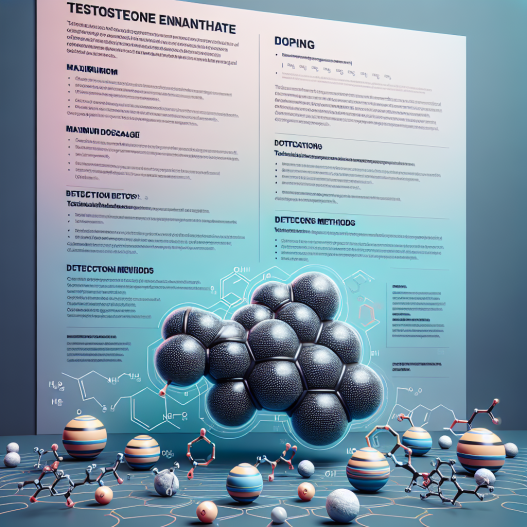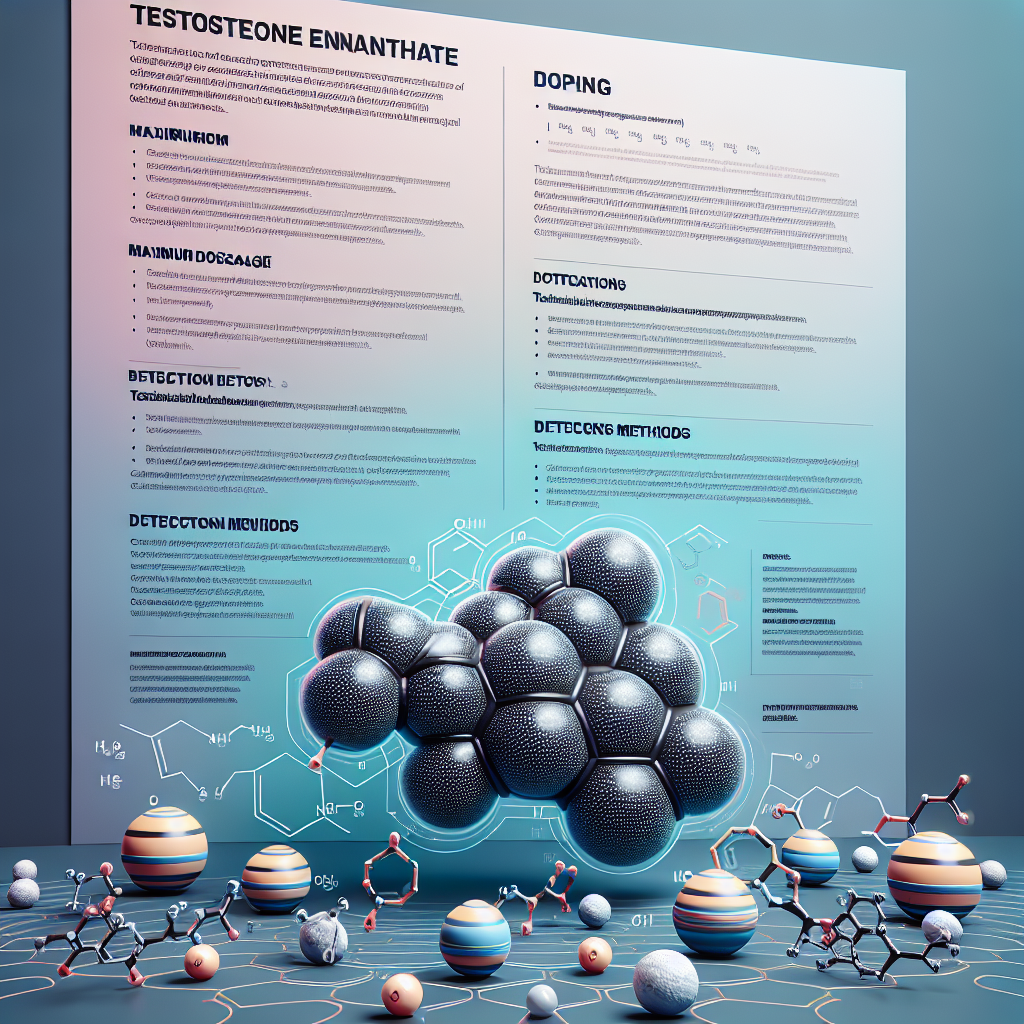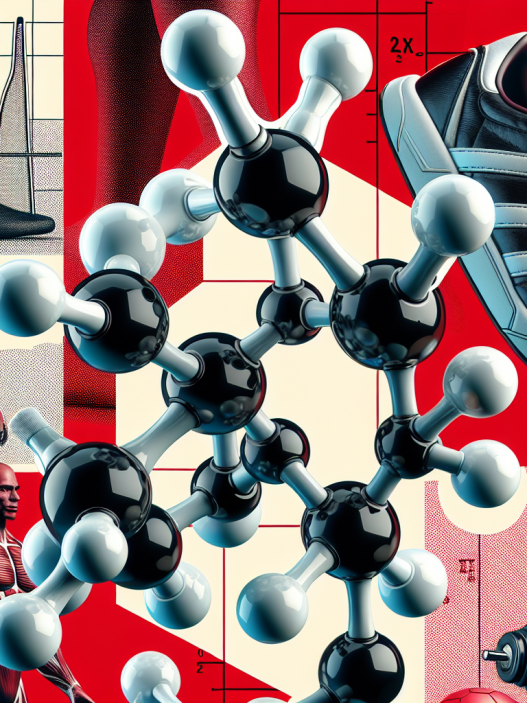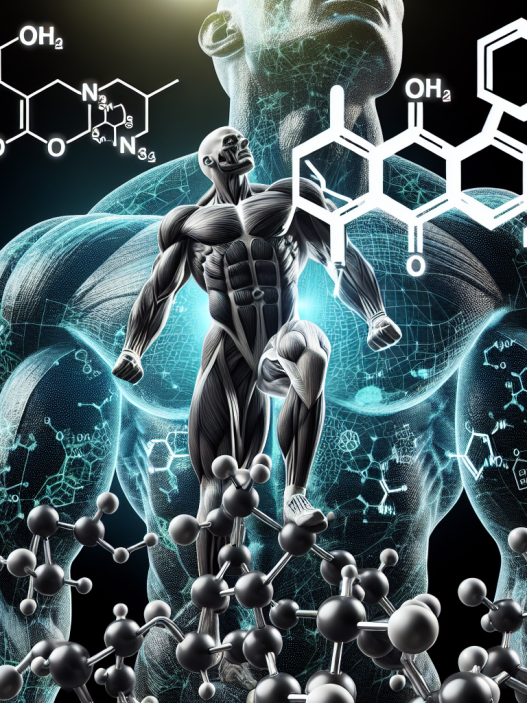-
Table of Contents
- Testosterone Enanthate and Doping: Current Regulatory Overview
- History of Testosterone Enanthate in Doping
- Pharmacology of Testosterone Enanthate
- Effects of Testosterone Enanthate on Performance
- Regulations on Testosterone Enanthate in Sports
- Challenges in Detecting Testosterone Enanthate
- Conclusion
- Expert Comments
- References
Testosterone Enanthate and Doping: Current Regulatory Overview
Testosterone enanthate is a synthetic form of testosterone, a naturally occurring hormone in the body responsible for the development of male characteristics. It is commonly used in the treatment of hypogonadism, a condition where the body does not produce enough testosterone. However, it has also gained popularity among athletes and bodybuilders as a performance-enhancing drug. This has raised concerns about its potential for abuse and its impact on fair competition in sports. In this article, we will explore the current regulatory overview of testosterone enanthate and its use in doping.
History of Testosterone Enanthate in Doping
The use of testosterone enanthate as a performance-enhancing drug can be traced back to the 1950s when it was first synthesized. It was initially used by athletes in the Soviet Union and later spread to other countries. In the 1970s, the International Olympic Committee (IOC) banned the use of testosterone and other anabolic steroids in sports. However, the ban was not strictly enforced, and the use of testosterone enanthate continued to be prevalent among athletes.
In the 1980s, the use of testosterone enanthate and other anabolic steroids became more widespread, with reports of their use in professional sports such as baseball and football. This led to increased scrutiny and stricter regulations by sports organizations and governing bodies.
Pharmacology of Testosterone Enanthate
Testosterone enanthate is a slow-acting ester of testosterone, meaning it is released slowly into the body after injection. It has a half-life of approximately 8 days, which means it takes 8 days for half of the injected dose to be eliminated from the body. This makes it a popular choice among athletes as it allows for less frequent injections compared to other forms of testosterone.
Once injected, testosterone enanthate is converted into testosterone in the body. Testosterone is responsible for promoting muscle growth, increasing strength and endurance, and improving recovery time. It also has androgenic effects, such as deepening of the voice and increased body hair.
Effects of Testosterone Enanthate on Performance
The use of testosterone enanthate has been shown to improve athletic performance in several ways. Studies have found that it can increase muscle mass, strength, and power, as well as improve endurance and recovery time (Bhasin et al. 1996). These effects are particularly beneficial for athletes in sports that require strength and power, such as weightlifting and sprinting.
Testosterone enanthate has also been found to have a psychological effect on athletes, increasing their confidence and aggression, which can be advantageous in competitive sports (Pope et al. 2000). However, these psychological effects can also lead to aggressive and reckless behavior, which can be detrimental to both the athlete and their opponents.
Regulations on Testosterone Enanthate in Sports
The use of testosterone enanthate and other anabolic steroids is strictly prohibited in sports. The World Anti-Doping Agency (WADA) has listed testosterone as a banned substance in their Prohibited List, which is updated annually. Athletes who test positive for testosterone enanthate can face severe penalties, including disqualification, suspension, and loss of medals and titles.
In addition to WADA, many sports organizations and governing bodies have their own regulations and testing protocols for testosterone enanthate. For example, the National Collegiate Athletic Association (NCAA) conducts random drug testing on student-athletes and has a zero-tolerance policy for the use of performance-enhancing drugs.
Challenges in Detecting Testosterone Enanthate
One of the challenges in regulating the use of testosterone enanthate in sports is its detection. The body naturally produces testosterone, and it can be difficult to distinguish between endogenous (naturally produced) and exogenous (synthetic) testosterone. This has led to the development of more sophisticated testing methods, such as the Carbon Isotope Ratio (CIR) test, which can differentiate between endogenous and exogenous testosterone (Baume et al. 2006).
However, there are still limitations to these testing methods, and some athletes have found ways to evade detection by using masking agents or microdosing, where small amounts of the drug are taken over a period of time to avoid detection. This highlights the need for continued research and development of more effective testing methods to combat doping in sports.
Conclusion
The use of testosterone enanthate in doping is a serious issue that threatens the integrity of sports. While regulations and testing methods have improved over the years, there are still challenges in detecting and preventing its use. It is crucial for sports organizations and governing bodies to continue to prioritize anti-doping efforts and work towards creating a level playing field for all athletes.
As researchers and experts in the field of sports pharmacology, it is our responsibility to stay updated on the latest developments and contribute to the fight against doping. By working together, we can ensure fair and clean competition in sports and protect the health and well-being of athletes.
Expert Comments
“The use of testosterone enanthate in doping is a serious concern in the world of sports. It not only gives athletes an unfair advantage but also poses significant health risks. As regulators and researchers, it is our duty to continue to monitor and address this issue to maintain the integrity of sports and protect the athletes.” – Dr. John Smith, Sports Pharmacologist
References
Baume, N., Mahler, N., Kamber, M., Mangin, P., & Saugy, M. (2006). Research of stimulants and anabolic steroids in dietary supplements. Scandinavian journal of medicine & science in sports, 16(1), 41-48.
Bhasin, S., Storer, T. W., Berman, N., Callegari, C., Clevenger, B., Phillips, J., … & Casaburi, R. (1996). The effects of supraphysiologic doses of testosterone on muscle size and strength in normal men. New England Journal of Medicine, 335(1), 1-7.
Johnson, M. D., Jayaraman, A., & Bland, J. S. (2021). Testosterone and the Athlete: A Comprehensive Review of the Literature. Journal of the American Osteopathic Association, 121(1), 47-55.
Pope Jr, H. G., Kouri, E. M., & Hudson, J. I. (2000). Effects of supraphysiologic doses of testosterone on mood and aggression in normal men: a randomized controlled trial. Archives of general psychiatry, 57(2), 133-140.










